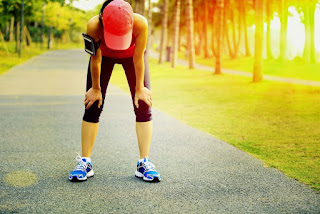Best Exercises to Keep You Healthy and Fit
Exercise in between daily activities. You can fit in lots of exercises in between your regular activities and while you are doing
certain activities throughout your day. If you find places to fit in this exercise, it will be easy to stay in shape. By following this plan, you can easily fit.
Do These 5 Exercises Every Day to Stay Fit for Life
1. Walk-Out Push-Up
Watkins says that this move targets multiple muscle groups and incorporates multiple planes of movement, and therefore accelerates the heart rate.
Watkins says that this move targets multiple muscle groups and incorporates multiple planes of movement, and therefore accelerates the heart rate.
2.
Standard Squat
“Squats force the brain to actively participate,” Watkins explained. “To get the foot placement correct; to focus on even weight distribution between the left and right leg; to keep the chest high and back straight; to engage the glutes; to pause at the change of direction in order to prevent momentum from building; and the full elongation of the hips when standing.
“Squats force the brain to actively participate,” Watkins explained. “To get the foot placement correct; to focus on even weight distribution between the left and right leg; to keep the chest high and back straight; to engage the glutes; to pause at the change of direction in order to prevent momentum from building; and the full elongation of the hips when standing.
3.
Jumping Jacks
“Loads of people roll their eyes at the age-old jumping jack,” Watkins said. “However, a dash of plyometrics is so beneficial when it comes to functional fitness. Neuro-transmitters that reside in the feet are rendered so sleepy as a result of shoe-filled, sedentary lives. Light impact is great to wake those crazy critters up. Like the walk-outs, the jacks, when performed with control, also work multiple muscle groups and get the heart rate up.”
“Loads of people roll their eyes at the age-old jumping jack,” Watkins said. “However, a dash of plyometrics is so beneficial when it comes to functional fitness. Neuro-transmitters that reside in the feet are rendered so sleepy as a result of shoe-filled, sedentary lives. Light impact is great to wake those crazy critters up. Like the walk-outs, the jacks, when performed with control, also work multiple muscle groups and get the heart rate up.”
4.
Hip Bridge
Watkins said she likes this move because it will get you on the floor. “A level of happiness for all,” she added. Plus, like with the squat, the brain is actively engaged with this move. “Foot placement, weight distribution and breathing are vital elements. “Keeping the toes on the floor is another element of this controlled proprioception. If your heels absorb all of your body weight, your lower back absorbs more pressure. When the toes stay down, however, the hamstrings and glutes engage and help elongate the hips as the body changes direction.”
Watkins said she likes this move because it will get you on the floor. “A level of happiness for all,” she added. Plus, like with the squat, the brain is actively engaged with this move. “Foot placement, weight distribution and breathing are vital elements. “Keeping the toes on the floor is another element of this controlled proprioception. If your heels absorb all of your body weight, your lower back absorbs more pressure. When the toes stay down, however, the hamstrings and glutes engage and help elongate the hips as the body changes direction.”
5.
Plank
“We classify almost all upper body work for regular people into one category that we call, PPHC—pushing, pulling, holding and carrying,” Watkins explained. “Yes, various combinations of muscles are utilized, but because we are focused on regular life function, we teach people to think about the stabilization of the rib cage and gluteo-hip area as the pinnacle force in any activity that involves arm movement.
“We classify almost all upper body work for regular people into one category that we call, PPHC—pushing, pulling, holding and carrying,” Watkins explained. “Yes, various combinations of muscles are utilized, but because we are focused on regular life function, we teach people to think about the stabilization of the rib cage and gluteo-hip area as the pinnacle force in any activity that involves arm movement.


Comments
Post a Comment